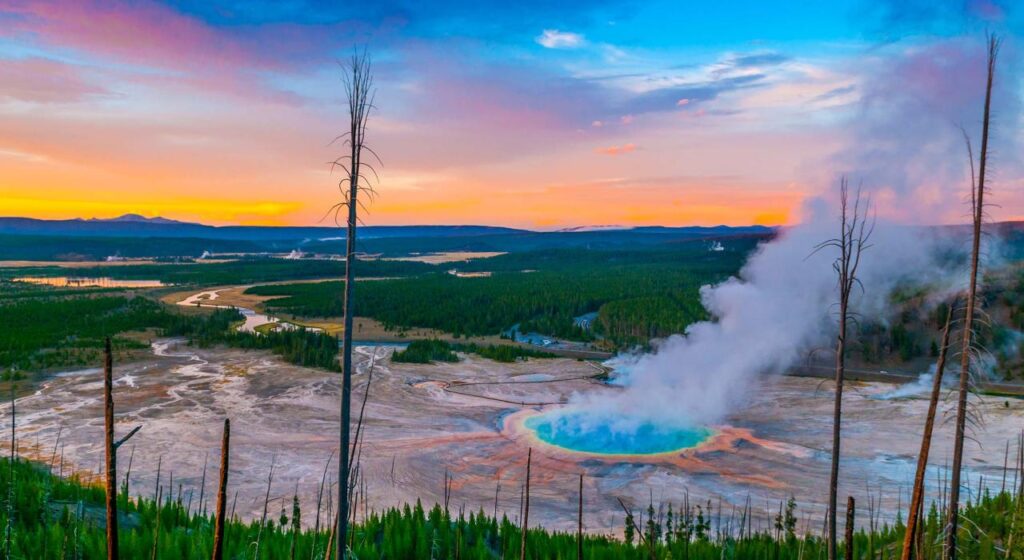Yellowstone National Park, USA travel tips
Category
Categories
Popular Articles

# Overview of the Destination:
Yellowstone National Park is a world-renowned destination covering over 2,200 square miles across Wyoming, Montana, and Idaho. It’s predominantly known for its geothermal features, most notably the Old Faithful Geyser, as well as a vast array of wildlife including grizzly bears, wolves, and herds of bison and elk. Yellowstone’s stunning landscapes, ranging from deep forests to expansive lakes and sprawling meadows, promise an unforgettable experience for nature lovers. Renowned for preserving and showcasing the world’s most extraordinary collection of geysers, hot springs, and geothermal features, this park is a must-visit location for those hungry for adventure, with its boundless opportunities for hiking, camping, boating, fishing, and wildlife viewing.
# Best Time to Visit:
The most popular time to visit Yellowstone is during the summer months of June-August due to warm temperatures and open roads. But if you prefer less crowded experiences, consider visiting during the shoulder seasons of spring (April-May) and fall (September-October). The park transforms into a winter wonderland from November to March, ideal for snowshoeing and cross-country skiing. Annual events include summer concerts and educational ranger programs.
# Climate & What to Pack:
Yellowstone’s climate varies with high elevation and is capable of sudden changes. Summers are mild and sunny, while winters are snowy and cold. Pack seasonal clothing: lightweight layers for summer, warm clothes, and heavy coats for winter. Don’t forget rain gear, sturdy walking shoes, hats, sunglasses, sunblock, and a reusable water bottle.
# Getting There:
Yellowstone is best accessed by a number of airports: Bozeman Yellowstone International Airport is closest. From these airports, car rentals, shuttles or taxis can take you to the park entrance. As Yellowstone is located within the United States, international visitors will need a valid visa and passport for entry.
# Getting Around Locally:
Within the park, your best option is to use a private vehicle or join a guided tour. Most roads are well-maintained, though do become crowded in peak seasons. Cycling is another popular option with bike rentals available at various locations. There are numerous walking trails, but distances can be large.
# Safety Tips:
While generally safe, visitors need to respect the wild nature of Yellowstone. Stay on marked trails to avoid dangerous geothermal areas, keep a safe distance from wildlife, and always carry bear spray when hiking. Sticking to daylight hours for hikes and activities is also recommended.
# Top Things to Do & See:
Must-see attractions include Old Faithful and the Grand Prismatic Spring in the Upper Geyser Basin, the wildlife in Hayden and Lamar valleys, the Grand Canyon of the Yellowstone, and Mammoth Hot Springs. If time permits, don’t miss out on the stunning Lake Yellowstone and its historic hotel.
# Where to Stay:
Accommodations in Yellowstone range from budget-friendly campsites to mid-range cabins and luxury lodges. Outside the park, nearby towns like Gardiner, West Yellowstone, and Cody offer a variety of hotels and B&Bs.
# Food & Local Cuisine:
Yellowstone offers a range of food options from quick grab-n-go snacks at general stores to full-service dining at park lodges, where you should try the local trout. Vegetarian, gluten-free, and children’s menus are usually available.
# Cultural & Practical Tips:
The official currency is the US dollar and the main language is English. Tipping is customary in restaurants and taxis. The standard voltage is 120V and plugs type A and B are used. Wi-Fi is limited to certain lodges and visitor centers.
# Sustainable or Responsible Travel Tips:
As a National Park, Yellowstone stresses preservation and conservation. Stick to marked trails, don’t feed the wildlife, and pack out all your trash. Using reusable water bottles, avoiding single-use plastics, and recycling where possible can help limit your impact.
Personal Travel Tip: Be patient and flexible. Wildlife sightings are never guaranteed and geysers operate on their own schedule. Prepare to embrace nature’s unpredictability—it’s a part of the Yellowstone experience.










